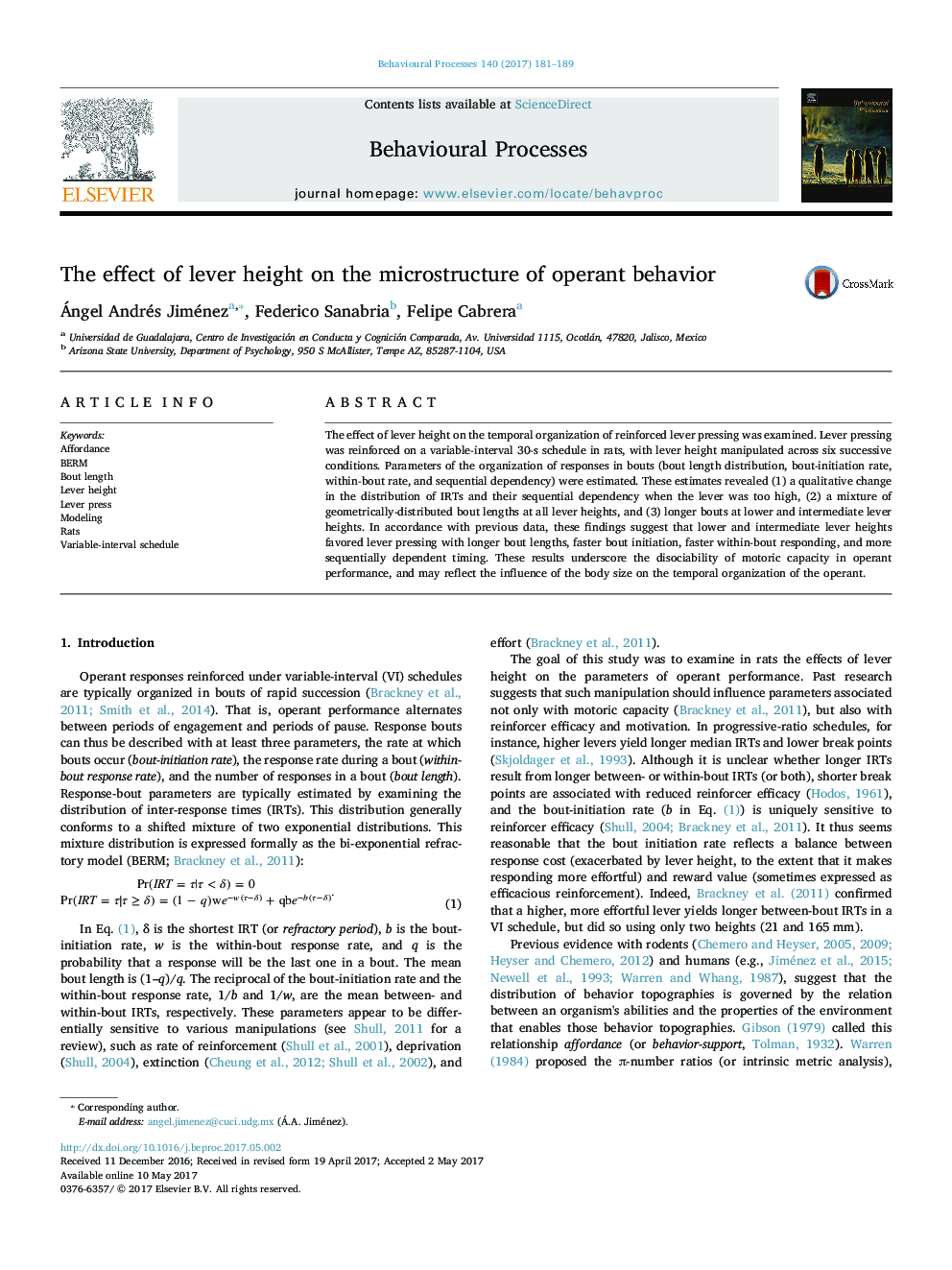| Article ID | Journal | Published Year | Pages | File Type |
|---|---|---|---|---|
| 5539789 | Behavioural Processes | 2017 | 9 Pages |
Abstract
The effect of lever height on the temporal organization of reinforced lever pressing was examined. Lever pressing was reinforced on a variable-interval 30-s schedule in rats, with lever height manipulated across six successive conditions. Parameters of the organization of responses in bouts (bout length distribution, bout-initiation rate, within-bout rate, and sequential dependency) were estimated. These estimates revealed (1) a qualitative change in the distribution of IRTs and their sequential dependency when the lever was too high, (2) a mixture of geometrically-distributed bout lengths at all lever heights, and (3) longer bouts at lower and intermediate lever heights. In accordance with previous data, these findings suggest that lower and intermediate lever heights favored lever pressing with longer bout lengths, faster bout initiation, faster within-bout responding, and more sequentially dependent timing. These results underscore the disociability of motoric capacity in operant performance, and may reflect the influence of the body size on the temporal organization of the operant.
Related Topics
Life Sciences
Agricultural and Biological Sciences
Animal Science and Zoology
Authors
Ángel Andrés Jiménez, Federico Sanabria, Felipe Cabrera,
